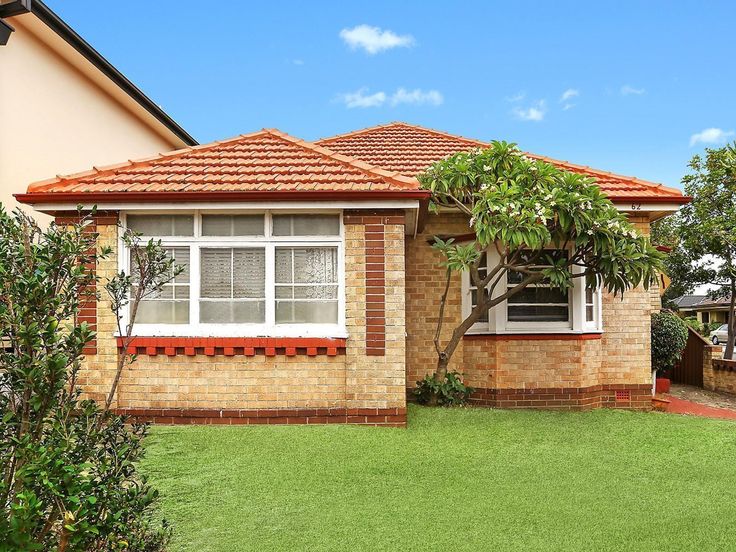Introduction
Moving to Australia as a new immigrant brings excitement, opportunity, and the challenge of securing stable, affordable housing. Whether you’re arriving on a skilled worker visa, joining family, or pursuing education, understanding how to navigate the Australian property market is crucial. From bustling metropolitan centers like Sydney and Melbourne to tranquil regional towns, each locale presents unique rental and purchase dynamics. This comprehensive guide delves into practical strategies—rental negotiations, government support schemes, shared accommodation, regional alternatives, and financial planning—to help you find a home that fits your budget. Along the way, we’ll highlight real-world examples, integrate valuable resources, and provide actionable tips so you can settle comfortably without overspending. Let’s embark on this journey to make your transition smoother and your housing search more successful.
Understanding the Australian Housing Market
Australia’s housing landscape is diverse, reflecting the country’s size and regional disparities. Major cities often command premium rents and property prices due to high demand, robust job markets, and international appeal. In contrast, outer suburbs and regional areas can offer significant savings but may require longer commutes or adjustments to lifestyle. Before beginning your search, research average rental costs in your target city—tools like realestate.com.au and Domain provide weekly rental averages and suburb comparisons. Pay attention to factors such as proximity to public transport, local amenities, and potential growth corridors that might influence future rental hikes or property values. Many newcomers find it helpful to compare global benchmarks; for instance, exploring High-Demand Jobs in Canada Offering Visa Sponsorship in 2025 can shed light on alternative markets and salary expectations abroad, helping set realistic budgetary expectations for your Australian move.
Results
#1. 💼 What type of visa‑sponsored job are you most interested in?
#2. ✈️ Are you willing to relocate to another country within the next 3–6 months?
#3. 👤 What is your gender?
#4. 🌐 Which continent do you currently reside in?
#5. 🎓 What is your highest level of education?
Housing costs are influenced by economic conditions, interest rates, and local policy. Australia’s Reserve Bank decisions on interest rates can ripple through mortgage repayments and rental yields, impacting affordability for tenants and buyers alike. Seasonal trends also matter: winter months (June–August) sometimes see reduced competition, while spring often peaks in listings and price. Keep an eye on local council initiatives—some offer incentives for first-time buyers or renters in specific zones. Additionally, understanding lease structures (fixed-term vs. periodic agreements), bond requirements (usually four weeks’ rent), and utility responsibilities will arm you with negotiation leverage when inspecting properties. Finally, join local expat forums or Facebook groups to gain on-the-ground insights from those who have recently navigated the market.
Renting vs Buying
Deciding whether to rent or buy hinges on your long-term plans, financial capacity, and lifestyle preferences. Renting offers flexibility—ideal if you’re still exploring job markets or visa pathways. Typical leases range from six to twelve months, with options to extend or break early (often with penalty). Renting lets you avoid upfront costs like stamp duty and large deposits, though you will pay a bond and ongoing rent, which can escalate annually with market rates. If you value mobility and low commitment, renting in a well-connected suburb near work or study may suit you best. Consider splitting rent in shared houses or boarding situations to reduce individual costs further.
Buying property in Australia requires more substantial capital: a 5–20% deposit, stamp duty (varies by state), legal fees, and mortgage insurance if your deposit is under 20%. However, property ownership can be a sound long‑term investment, especially if you secure a home in an emerging suburb with growth potential. Fixed‑rate mortgages can lock in repayments, protecting against interest rate hikes. If you’re on a student visa or plan to study, understanding rules around part-time work is critical: Working Part-Time While Studying in the USA: F-1 Visa Rules may not apply directly, but exploring similar student work entitlements in Australia can help you budget for initial home‑buying costs. Always consult a financial adviser to map out your borrowing power and create a realistic repayment plan before committing.
Government Assistance Programs
Australia offers various schemes to ease the housing burden for eligible newcomers. The First Home Owner Grant (FHOG) provides a one‑off payment (amount varies by state) to first‑time buyers purchasing new homes. Combined with stamp duty concessions and First Home Loan Deposit Scheme, you may be able to buy with as little as a 5% deposit. To qualify, you must meet residency requirements—permanent residents and eligible visa holders often qualify. Additionally, some states run shared equity programs, where the government co‑owns a portion of your property, reducing your initial outlay.
For renters on low to moderate incomes, community housing providers and state‑run social housing offer subsidised rental options. Eligibility criteria focus on income thresholds and visa status. While waiting lists can be lengthy, applying early increases your chances of securing a place. Families with children may also be eligible for family-specific assistance; exploring international examples can provide broader context. For instance, Bringing Dependent Children to Canada: Visa Options outlines family visa pathways abroad, which underscores the importance of planning for dependents in your housing search. Similarly, reviewing UK Spouse Visa Financial Requirements Explained can help you understand spousal sponsorship thresholds that may mirror Australia’s partner visa financial criteria.
Beyond direct grants, many local councils offer rental relief or moving subsidies for regional relocations, encouraging population growth outside major hubs. Check council websites for relocation packages, which sometimes include rental discounts, bond waivers, or removal cost contributions. Integrate these opportunities into your housing plan to minimize upfront expenses and accelerate your settlement journey.
Shared Accommodation
Opting for shared accommodation can dramatically reduce your housing costs as a new immigrant. House‑sharing or flat‑sharing arrangements split rent, utilities, and bond payments among multiple tenants. Popular platforms like Flatmates.com.au and Facebook groups dedicated to city suburbs can connect you with potential housemates. When selecting a share, consider factors such as lease type (individual vs. joint), house rules, and compatibility with roommates’ lifestyles. Always inspect the property in person, review the rental agreement, and clarify utility billing methods—some houses include water and electricity in rent, while others require separate contributions.
For those employed in service industries, combining work and living arrangements can be particularly effective. Many establishments offer on‑site accommodation or discounted staff housing; exploring Hospitality Staff Jobs (Hotels/Restaurants) in the UK with Visa Sponsorship provides insight into how employers can facilitate lodging for workers. While UK‑centric, this model is mirrored in Australia’s regional resorts and seasonal farms. Shared accommodation isn’t limited to cities—rural hostels, farm stays, and worker dormitories in agriculture-rich areas can slash housing expenses and immerse you in local communities. Always negotiate lease terms upfront, confirm your bond return conditions, and maintain clear communication with landlords or share‑house coordinators to protect your rights and finances.
Visa-Sponsored Job Opportunities in Australia
| Job Opportunity | Average Annual Salary (AUD) |
|---|---|
| Top 10 Healthcare Jobs in Australia with Visa Sponsorship for 2025 | $85,000 |
| Electrician Roles in Australia: Securing Visa Sponsorship | $75,000 |
| Farm Manager Positions in Australia with Visa Pathways | $70,000 |
Visa Pathways and Eligibility Criteria
| Visa Type | Key Criteria | Application Fee (AUD) |
|---|---|---|
| Skilled Worker Visa (Points System) | 65+ points, relevant occupation, English level | $4,240 |
| Student Visa (Subclass 500) | Confirmation of enrolment, financial capacity | $710 |
| Partner Visa (Spouse Sponsorship) | Genuine relationship, sponsor eligibility | $7,715 |
Global Visa Options for Future Moves
| Country | Visa Program | Processing Time |
|---|---|---|
| Germany | Skilled Immigration Act | 3–6 months |
| Canada | Express Entry | 6 months |
| UK | Global Talent Visa | 8 weeks |
| Ireland | Work Visa Options | 1–3 months |
Regional and Rural Options
If metropolitan rents exceed your budget, consider relocating to regional or rural Australia. Cities like Newcastle (NSW), Geelong (VIC), and Wollongong (NSW) offer more affordable housing while maintaining access to urban amenities. Regional towns often feature lower median rents—sometimes 20–30% below capital city rates—and community housing schemes tailored to newcomers. Be mindful of transportation costs; factor in car ownership, fuel prices, or limited public transport when calculating total living expenses.
Agricultural and trades roles in rural areas can come with accommodation benefits or subsidised housing. Seasonal workers and long‑term staff often receive on‑site lodging or allowances. To explore analogous opportunities abroad, check out Plumber Jobs in Canada for Skilled Immigrants with Sponsorship for insights into how essential tradespeople secure housing support overseas. Additionally, roles in agricultural support provide immersive living options: Agricultural Technician Jobs in Canada with Visa Sponsorship outlines how technicians benefit from employer‑provided housing, a model reflected in many Australian farm management positions. Before committing, research visa requirements for regional work, ensure local healthcare access, and connect with community networks to ease your transition.
Building Credit and Financial Planning
Establishing a solid financial foundation is key to securing favorable rental terms or mortgage approvals. Opening an Australian bank account immediately upon arrival helps you build transaction history. Use a mix of credit products—such as a low‑limit credit card, small personal loan, or buy‑now‑pay‑later services—to demonstrate responsible repayment behavior. Always pay bills on time, keep credit utilization low, and review your credit report regularly via platforms like Equifax or Experian.
Securing a well‑paid role accelerates credit building and savings. Tech professionals often command competitive salaries; for example, Software Developer Jobs in Ireland for Non-EU Citizens (Visa Focus) showcases how developers navigate visa sponsorship and salary packages abroad, which can guide your Australian job search. In the U.S., high‑earning tech roles—$90K+ Tech Jobs in the USA with H1-B Visa Sponsorship—offer benchmarks for negotiating Australian tech salaries. Use salary calculators and industry reports to benchmark your expected earnings, then tailor your rental or mortgage applications with documented proof of income and savings buffers.
Community and Support Networks
Strong community ties can unlock hidden housing opportunities. Many suburbs have local Facebook groups, WeChat circles, or Meetup communities where members post spare rooms or sublets before they hit mainstream portals. Cultural or faith-based organizations often maintain noticeboards for shared housing, particularly in areas with high concentrations of newcomers. Attend local events, volunteer, or join sports clubs to expand your network and learn about upcoming vacancies.
Some employers provide relocation assistance, including temporary accommodation or referrals to trusted property managers. For instance, healthcare and aged‑care providers often partner with housing agencies to support staff—paralleling Caregiver Jobs in the USA with Visa Sponsorship Options models that include lodging perks. Construction firms in regional Australia sometimes bundle accommodation with contracts; explore Construction Worker Jobs in Canada with Visa Sponsorship Opportunities to see how international companies structure these packages. Leverage professional networks on LinkedIn, industry associations, and local job fairs to uncover roles that offer housing benefits, helping you secure both employment and a roof over your head.
Saving Tips and Cost-Saving Strategies
Small changes can yield significant savings on housing costs. Negotiate rent with landlords—offering to sign longer leases or prepay several months can justify discounted rates. Consider including utilities in your rent package, especially in older properties where landlords can offer flat rates. Subletting a spare room on platforms like Airbnb (with permission) or hosting international students for homestays can subsidize your mortgage repayments.
If you’re pursuing further studies or professional development, investigate scholarship and grant opportunities to reduce living expenses. For example, Fully Funded Scholarships in Germany for International Students (Visa Inc.) highlights programs that cover tuition and living costs abroad; while Australia’s scholarship landscape differs, similar state‑based or university‑sponsored awards can free up your budget for housing. Additionally, life events like engagement or marriage may qualify you for special visas—review the USA K-1 Fiancé(e) Visa Process and Timeline to understand how partner visa pathways can affect your household income and rental eligibility. Always maintain an emergency fund equal to at least one month’s rent to navigate unexpected repairs or lease changes without financial strain.
Global Visa Options for Future Moves
| Country | Visa Program | Processing Time |
|---|---|---|
| Germany | Skilled Immigration Act | 3–6 months |
| Canada | Express Entry | 6 months |
| UK | Global Talent Visa | 8 weeks |
| Ireland | Work Visa Options | 1–3 months |
Final Thoughts and Next Steps
Securing affordable housing as a new immigrant in Australia requires a blend of research, flexibility, and community engagement. By exploring rental versus purchase options, leveraging government schemes, and tapping into shared accommodation, you can reduce costs significantly. Regional moves, strategic employment choices, and proactive financial planning further bolster your ability to find a home that meets both your needs and your budget. Remember to build local networks, maintain clear communication with landlords, and document your income and rental history to strengthen applications. With these strategies in hand, you’ll be well‑equipped to navigate the Australian housing market, settle into your new community, and focus on the exciting opportunities that lie ahead.








